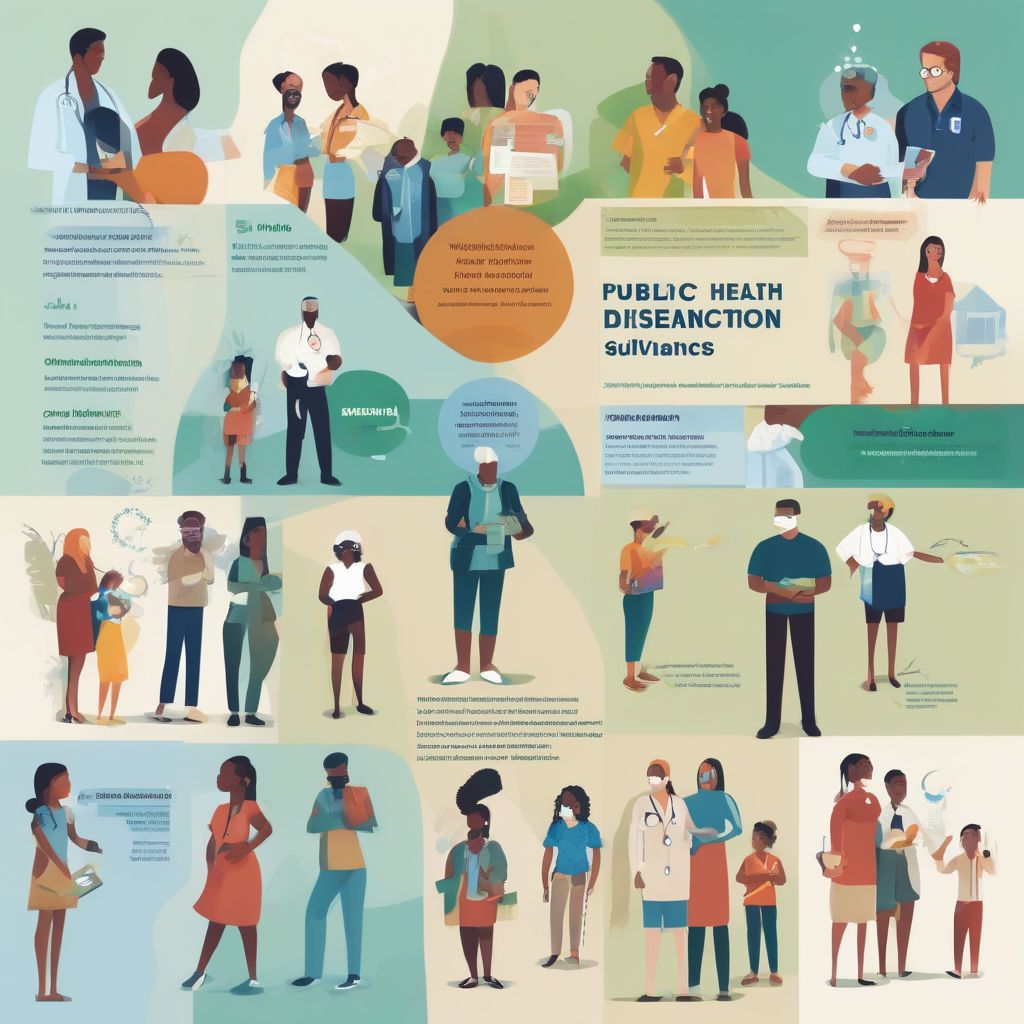Imagine a world without vaccines, clean water, or health education. Diseases would run rampant, life expectancy would plummet, and healthcare systems would be overwhelmed. Thankfully, public health strategies exist to prevent such scenarios. They are the invisible shield protecting us from preventable illnesses and promoting overall well-being. But just how crucial are these strategies in disease control? Let’s delve in.
Understanding the Power of Prevention
Public health strategies focus on preventing diseases before they even occur. This proactive approach saves lives, reduces healthcare costs, and strengthens communities. Instead of solely treating the sick, public health aims to create healthier environments and empower individuals to make healthy choices. Think of it like building a strong foundation for a house; a solid foundation prevents cracks and collapses, just as strong public health initiatives prevent widespread disease outbreaks.
The Core Components of Public Health Strategies
Several key components contribute to the effectiveness of public health strategies:
- Health Education and Promotion: Empowering individuals with knowledge about healthy lifestyles, disease prevention, and early detection is crucial. This includes campaigns promoting healthy eating, physical activity, and avoiding risky behaviors like smoking. As a certified nutritionist and meal prep coach, I’ve witnessed firsthand how education can transform lives. People equipped with the right information are better prepared to make choices that support their well-being.
- Vaccination: Vaccines are one of the most successful public health interventions in history. They have eradicated deadly diseases like smallpox and significantly reduced the incidence of others like polio and measles. Vaccines build immunity within populations, creating a shield against outbreaks.
- Disease Surveillance: Tracking disease patterns and outbreaks is vital for rapid response and containment. This involves collecting data, analyzing trends, and implementing control measures to prevent widespread transmission.
- Environmental Health: Creating and maintaining healthy environments is essential for disease prevention. This includes access to clean water and sanitation, safe food handling practices, and controlling air pollution.
- Health Policy and Advocacy: Strong policies and regulations are needed to support public health initiatives. This includes advocating for funding, implementing regulations for health and safety, and creating supportive environments for healthy behaviors.
Real-World Examples of Public Health in Action
The impact of public health strategies is evident in numerous success stories:
- The Eradication of Smallpox: A global vaccination campaign led to the complete eradication of smallpox, a devastating disease that once claimed millions of lives.
- Polio Elimination: Concerted efforts through vaccination have brought the world close to eradicating polio, drastically reducing cases globally.
- Tobacco Control: Public health campaigns raising awareness about the dangers of smoking, coupled with policy changes like smoke-free zones, have significantly reduced smoking rates in many countries.
 Public Health Strategies for Disease Control
Public Health Strategies for Disease Control
The Importance of Community Engagement
Public health is not solely the responsibility of government agencies. Community engagement is essential for effective disease control. Individuals, community leaders, and organizations all have a role to play in promoting healthy behaviors, advocating for policies, and supporting public health initiatives.
Addressing Common Concerns
It’s natural to have questions and concerns about public health interventions. Addressing these concerns with accurate information and open dialogue is crucial:
- Vaccine Safety: Vaccines undergo rigorous testing and monitoring to ensure their safety and effectiveness. While mild side effects can occur, serious adverse events are rare.
- Cost of Public Health Programs: Investing in public health saves money in the long run by preventing costly disease outbreaks and reducing healthcare burdens.
- Individual Liberty vs. Public Health: Finding a balance between individual freedoms and public health needs is an ongoing challenge. Open communication and transparent policy-making are essential.
The Future of Public Health
Public health continues to evolve, facing new challenges like emerging infectious diseases, climate change, and health disparities. Embracing innovation, technology, and data-driven approaches will be crucial for future success. This includes leveraging digital tools for health education, developing new vaccines and treatments, and strengthening disease surveillance systems.
Conclusion
Public health strategies are the cornerstone of disease control, protecting populations, promoting well-being, and saving lives. From vaccination campaigns to health education initiatives, these strategies play a vital role in preventing illness and building healthier communities. By supporting public health efforts, advocating for policies, and making healthy choices, we can all contribute to a healthier future. What are your thoughts on the importance of public health in your community? Share your perspectives in the comments below. Let’s work together to build a healthier world, one community at a time.



